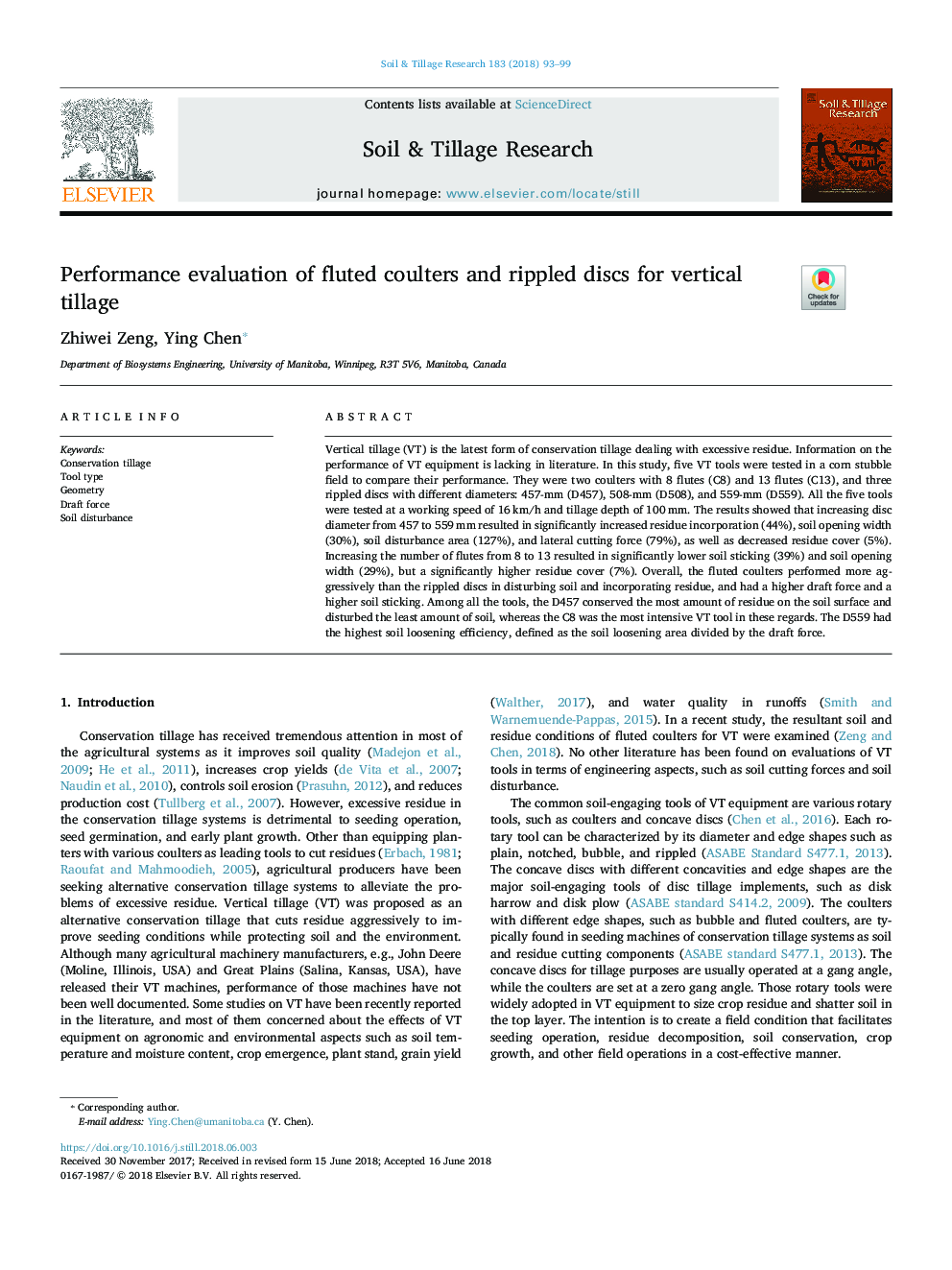| Article ID | Journal | Published Year | Pages | File Type |
|---|---|---|---|---|
| 6772934 | Soil and Tillage Research | 2018 | 7 Pages |
Abstract
Vertical tillage (VT) is the latest form of conservation tillage dealing with excessive residue. Information on the performance of VT equipment is lacking in literature. In this study, five VT tools were tested in a corn stubble field to compare their performance. They were two coulters with 8 flutes (C8) and 13 flutes (C13), and three rippled discs with different diameters: 457-mm (D457), 508-mm (D508), and 559-mm (D559). All the five tools were tested at a working speed of 16â¯km/h and tillage depth of 100â¯mm. The results showed that increasing disc diameter from 457 to 559â¯mm resulted in significantly increased residue incorporation (44%), soil opening width (30%), soil disturbance area (127%), and lateral cutting force (79%), as well as decreased residue cover (5%). Increasing the number of flutes from 8 to 13 resulted in significantly lower soil sticking (39%) and soil opening width (29%), but a significantly higher residue cover (7%). Overall, the fluted coulters performed more aggressively than the rippled discs in disturbing soil and incorporating residue, and had a higher draft force and a higher soil sticking. Among all the tools, the D457 conserved the most amount of residue on the soil surface and disturbed the least amount of soil, whereas the C8 was the most intensive VT tool in these regards. The D559 had the highest soil loosening efficiency, defined as the soil loosening area divided by the draft force.
Related Topics
Physical Sciences and Engineering
Energy
Renewable Energy, Sustainability and the Environment
Authors
Zhiwei Zeng, Ying Chen,
